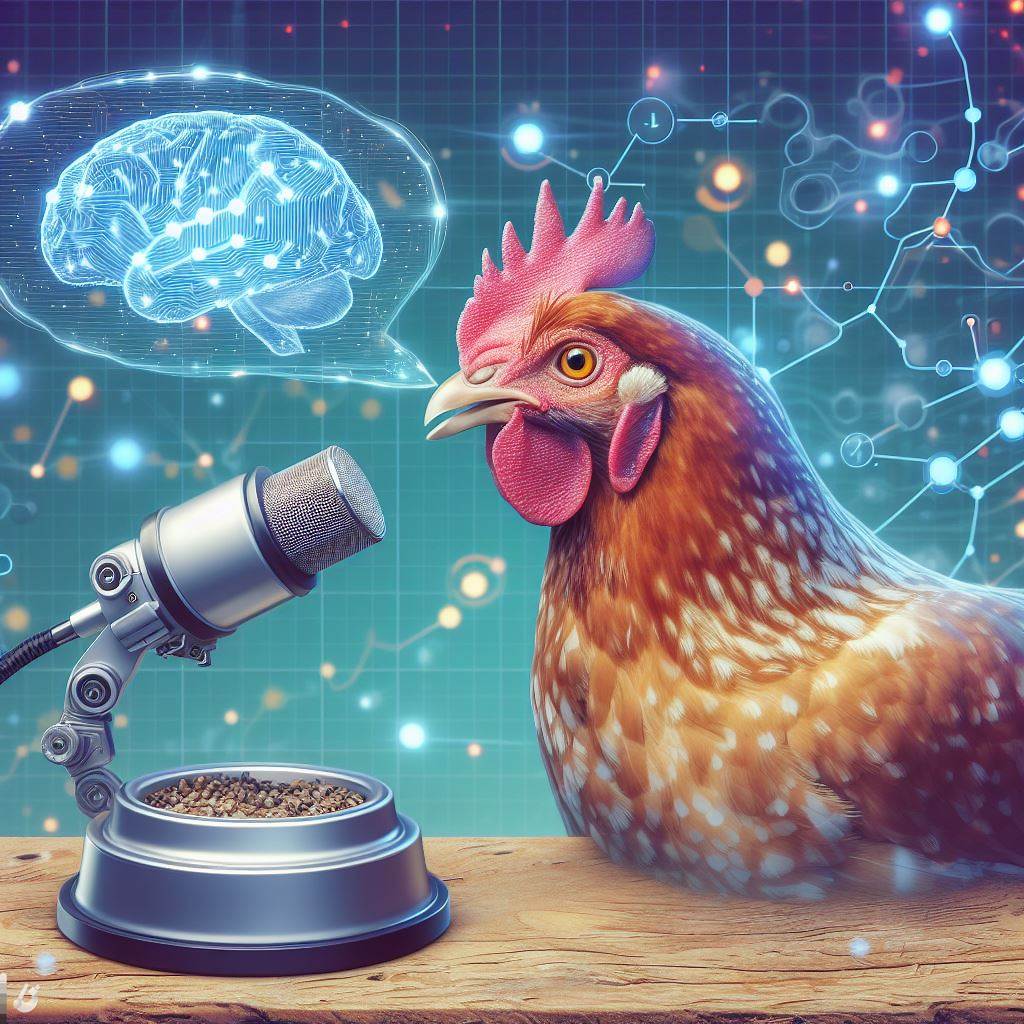
Researchers at Dalhousie University are utilizing artificial intelligence (AI) to decode the complex language of chickens. The project aims to analyze chicken vocalizations and non-verbal cues to gain insights into their communication methods and emotional states.
Dalhousie University researchers are employing AI to decipher the intricate language of chickens. The project focuses on scrutinizing both the vocalizations and non-verbal cues of these birds to uncover valuable insights into their communication styles and emotional well-being.
The use of AI and machine learning serves as a universal translator for chicken speech, enabling the recognition of patterns and nuances in their vocalizations.
AI and machine learning act as a universal translator, allowing researchers to identify and understand patterns and subtleties in the vocalizations of chickens. This technology plays a crucial role in bridging the gap in communication between humans and chickens.
The researchers employ Natural Language Processing (NLP) to interpret the emotional content behind the sounds, aiming to understand whether chickens are stressed or content.
Utilizing Natural Language Processing (NLP), the researchers delve into the emotional content conveyed through chicken sounds. Their objective is to determine whether these feathered creatures are experiencing stress or contentment, shedding light on the intricate emotions within the avian world.
The research extends beyond academic curiosity, with real-world implications for the agricultural sector.
This research isn't confined to academic curiosity; it holds significant implications for the agricultural sector. The potential applications of understanding chicken communication are vast and could revolutionize farming practices.
Understanding chicken communication can lead to improved farming practices, allowing farmers to create better living conditions for healthier and happier chickens.
Insights gained from the research can potentially revolutionize farming practices, empowering farmers to enhance living conditions for chickens. This could contribute to the well-being of the poultry, resulting in healthier and happier birds.
The insights gained from the research may impact animal welfare policies and ethical treatment, emphasizing empathy and understanding.
Beyond farming practices, the findings have the potential to influence animal welfare policies and ethical treatment. The emphasis on empathy and understanding in the research may pave the way for improved ethical practices in animal husbandry.
The ethical use of AI in this context sets a precedent for future technological applications in animal science, aligning advancements with ethical principles and animal welfare.
The ethical use of AI in understanding chicken communication establishes a precedent for future technological applications in animal science. This aligns technological advancements with ethical principles and emphasizes the importance of considering animal welfare in technological developments.
The research also contributes to education and conservation efforts, providing insights into avian communication for conservationists working to protect bird species and their habitats.
The broader impact of the research extends to education and conservation. Insights into avian communication contribute valuable knowledge for conservationists striving to protect bird species and their habitats.
The article concludes by highlighting the potential of AI to usher in a new era of understanding between humans and the animal world, starting with the decoding of chicken language.
In conclusion, the article underscores the potential of AI to facilitate a new era of understanding between humans and the animal world. The decoding of chicken language serves as an initial step, showcasing the broader possibilities for technology in bridging communication gaps across species.